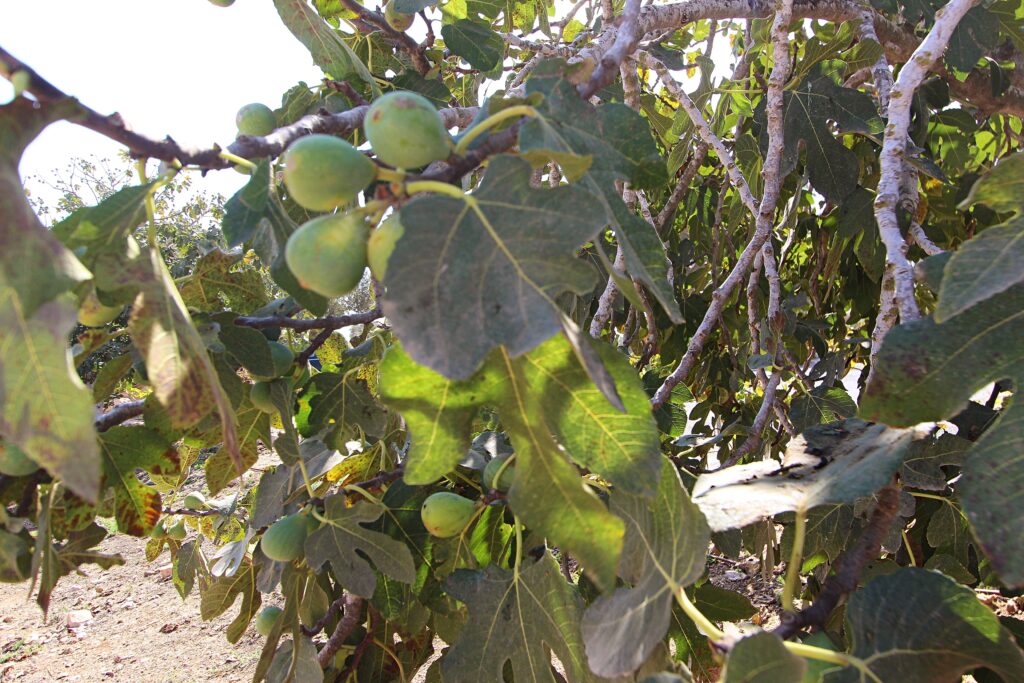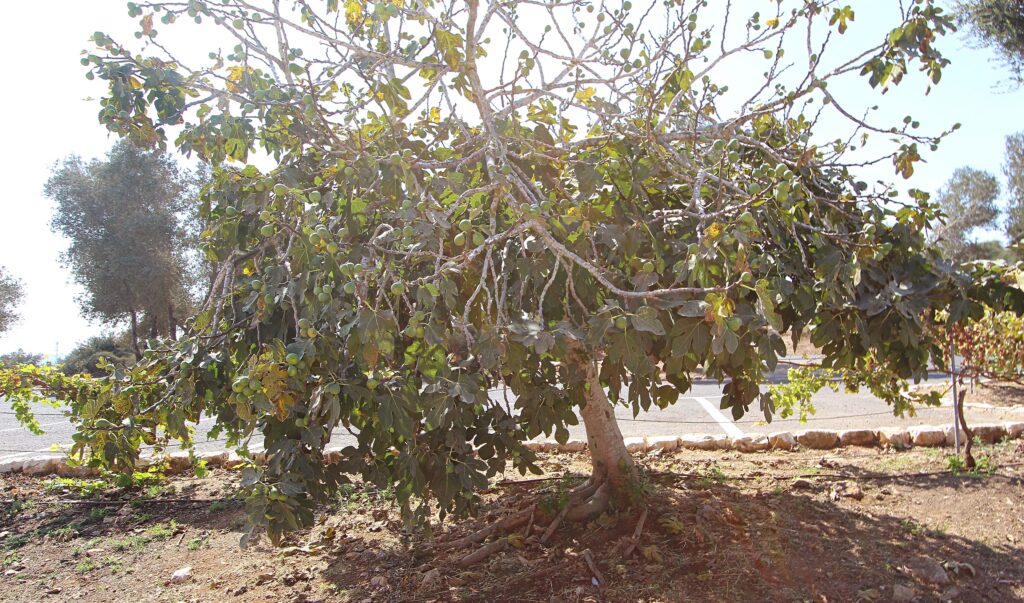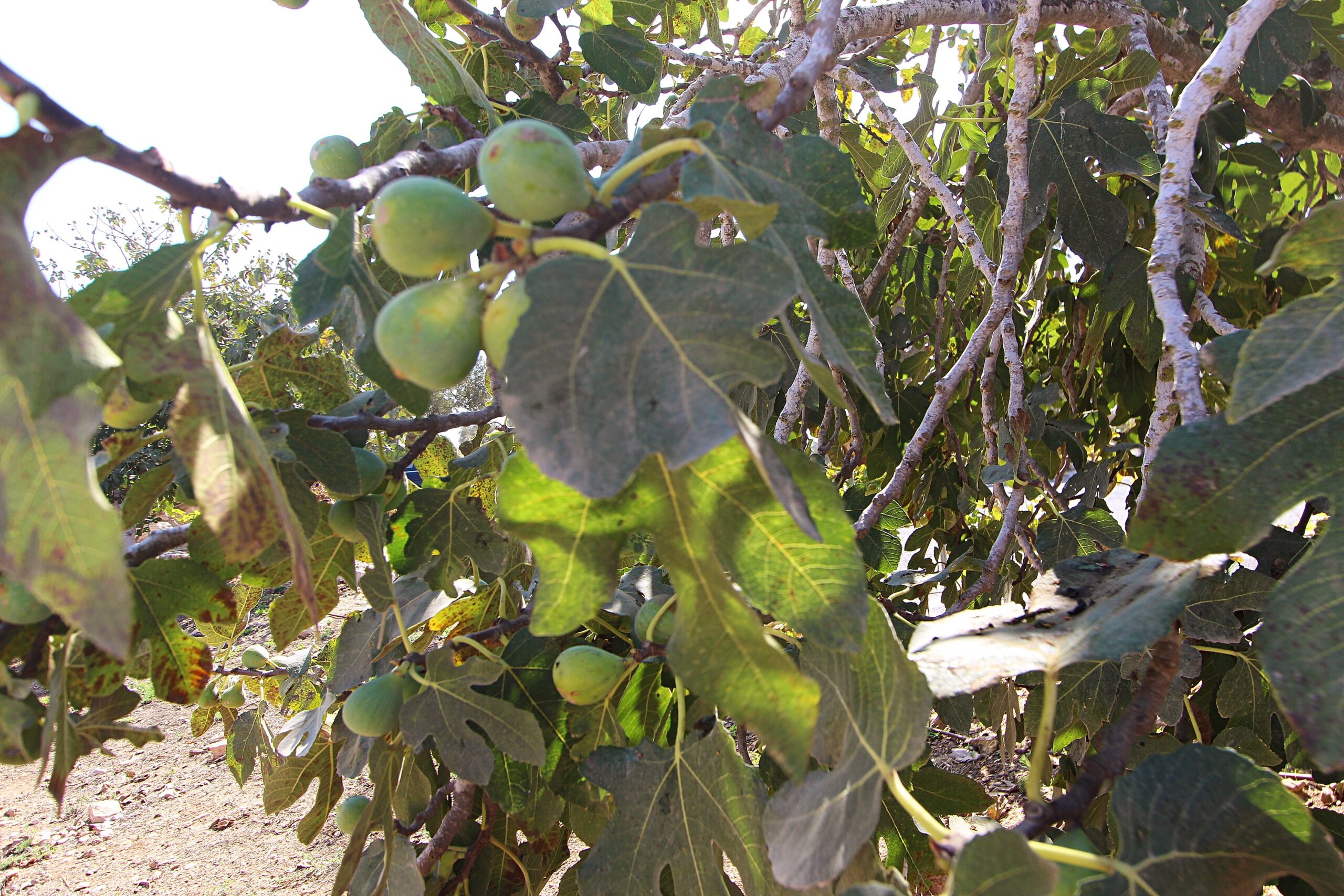
After the Lord’s Triumphal Entry into Jerusalem and his second cleansing of the temple, the Lord and his disciples returned to Bethany for the night, on the east side of the Mount of Olives. The following morning the Lord and his disciples returned to Jerusalem traveling west over the Mount of Olives and along the way…
“19 And when he saw a fig tree in the way, he came to it, and found nothing thereon, but leaves only, and said unto it, Let no fruit grow on thee henceforward for ever. And presently the fig tree withered away.
20 And when the disciples saw it, they marvelled, saying, How soon is the fig tree withered away!” Matthew 21: 19-20. (Also in Mark 11:12-14, 20-23.)
On the surface it seems rather an extreme punishment to the fig tree. However, if we understand a few things about fig trees then we can begin to see what the Lord was teaching the disciples through this object lesson. To begin with, the fig tree produces one of the earliest fruits, in fact the tree begins to show fruit even before it produces spring leaves. So a fig tree with leaves should also have fruit. If it does not have fruit, it is diseased.
The Lord was demonstrating the need that true followers should produce spiritual fruit through their actions. Additionally, in Mark the Lord also teaches that faith is a real power of action.
About the importance of figs, they were an important crop in the land of Israel. They were eaten fresh as they are sweet and juicy, they were cut up and dried for eating later, and they were pressed and their syrup became a prized type of honey. It may be that the description of Canaan as “a land flowing with milk and honey” (Exodus 3:8), quite possibly was referring to fig honey.

Figs and fig trees are mentioned repeatedly in the Bible.
It all starts in the Garden of Eden with Adam and Eve:
In Genesis 3 verse 7 we read, “And the eyes of them both were opened, and they knew that they were naked; and they sewed fig leaves together, and made themselves aprons.”
It has been speculated that fig leaves were chosen because they are a wide leaf. However, they surely must have been spring leaves (it was the Garden of Eden after all) as the late summer leaves are extremely scratchy and would be more uncomfortable than burlap.
Later, because fig leaves were used by Adam and Eve to hide their reproductive organs the leaves became symbols of fertility. Additionally, they became symbols for modesty (such as statues produced during the Victorian age).
Demonstrating the importance of the fig to the agricultural economy of the land of Israel, fig trees are mentioned in passing an additional 14 times in the Bible. In the Old Testament: Judges 9:10, 1 Kings 4:25, Micah 4:4, 2 Kings 20:7, Isaiah 38:21, and Hosea 9:10. In the New Testament: Matthew 7:16, Luke 6:44, Matthew 24:32, Mark 13:28, Luke 21:29, John 1:48, James 3:12, and Revelation 6:13.
< Previous post on The Lord’s “Miracle of the Swine” and Casting Out Legion of Devils
Return to the Homepage
Next post on Nazareth, The Lord’s Childhood Village >
